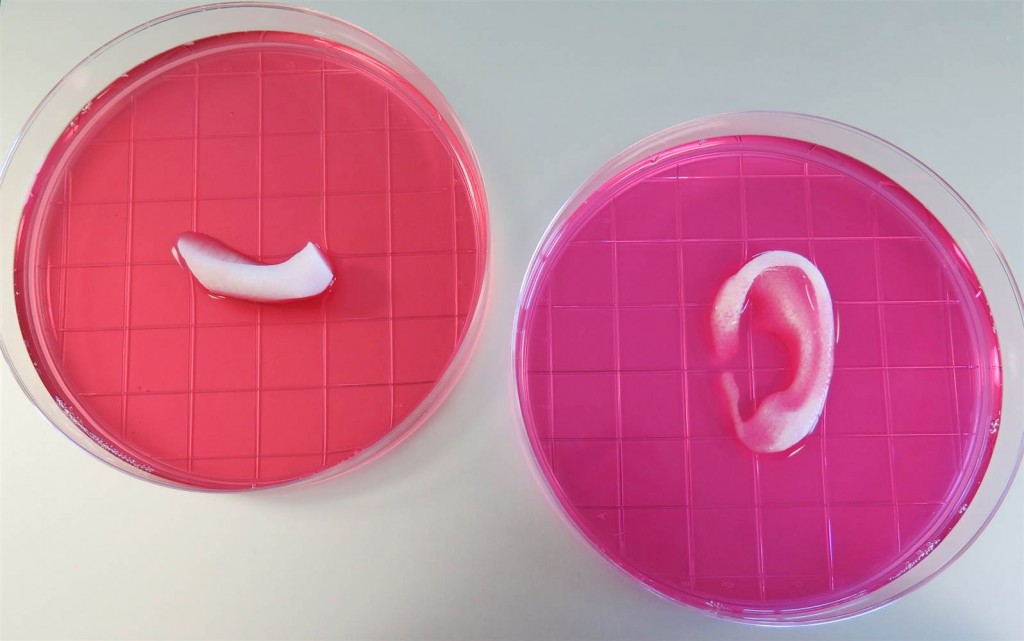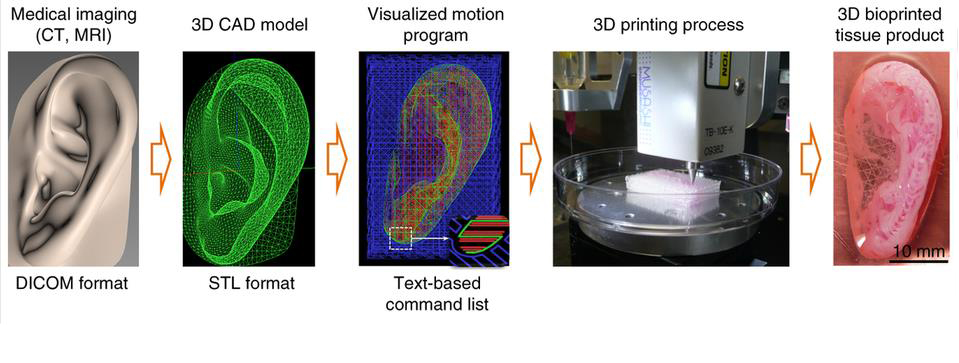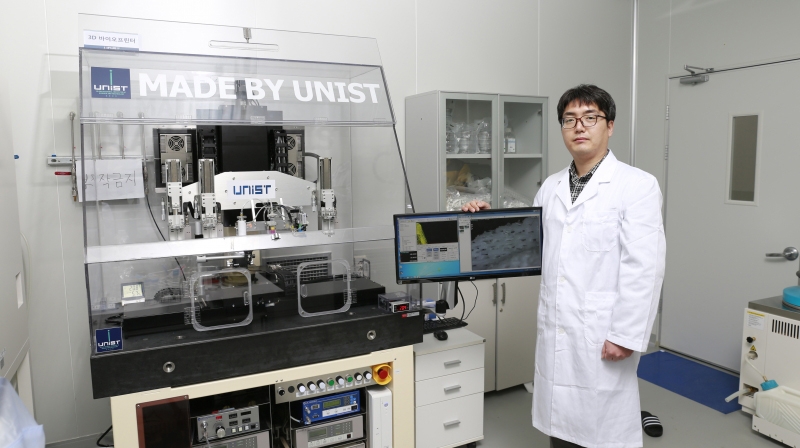For decades, researchers have succeeded at 3D printing living tissues, but they have failed to print human tissue and organs that are good enough to implant into humans and animals.
A new study by an international team of researchers from UNIST and the United States Wake Forest Baptist Medical Center (WFBMC) has proved that it is now possible to print living tissue structures that are large and sturdy enough to replace injured or diseases tissue in patients. The team reports that this new tissue can also stay long enough to integrate with the body and fuse with its blood supply.
This study was jointly conducted by Prof. Hyun-Wook Kang (School of Life Sciences) of UNIST, the first author of the study, Director Anthony Atala, and four other researchers from the Wake Forest Institute for Regenerative Medicine, in North Carolina, United States.

Completed ear and jaw bone structures printed with the Integrated Tissue-Organ Printing System. l Photo Credit: Wake Forest Institute of Regenerative Medicine
In the study, the team presented a first-of-its-kind bioprinter, “Integrated Tissue-Organ Printing System (ITOP)” that can fabricate human-scale tissue of any shape, using living cells as the ink. This bioprinter combines a bio-degradeable plastic which gives the structure and a water-based gel which contains the cells and encourages them to grow.
According to the team, although theses printed body parts have been tested only in laboratory animals, when they implanted 3D printed ears under the skin of mice, the shape of the ear remains intact, new supporting cartilage started growing, and blood vessels began to generate after two months.

3D shape imitating target issue or organ, printed with The Integrated Tissue-Organ Printing System (ITOP) Process
Prof. Kang said, “Although these printed body parts are still years away from being used in actual human patients, our research raises the hope of replacing injured or diseased tissues in patients.” The team adds, “Soon, people will get custom-made transplants using their own cells, or closely matched cells, grown to just the right size and shape.”
The research was supported, in part, by grants from the Armed Forces Institute of Regenerative Medicine, the Telemedicine and Advanced Technology Research Center at the U.S. Army Medical Research and Material Command, and the Defense Threat Reduction Agency.
Journal Reference:
Hyun-Wook Kang, Sang Jin Lee, In Kap Ko, Carlos Kengla, James J Yoo, & Anthony Atala. “A 3D bioprinting system to produce human-scale tissue constructs with structural integrity”. Nature Biotechnology (2016).














